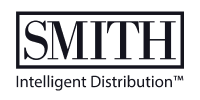In the fast-paced and ever-evolving electronics industry, timely access to accurate data is critical for survival. It informs decision-making and supports agile, adaptable supply chains. In an automated society where data feeds progress, advanced synchronization bridges the gap between real-time insights and actionable outcomes, enabling companies to anticipate challenges and respond proactively.
Supply chain disruption is no longer an anomaly—it’s the new normal. Thus, technologies that support data synchronization are indispensable for building resilience and ensuring continuity in an increasingly interconnected global marketplace.
What is an Agile Supply Chain Strategy?
Flexibility, responsiveness and adaptability are the cornerstones of an agile supply chain, enabling swift adjustments to changes in demand, market conditions or disruptions. Unlike traditional supply chain models that focus primarily on efficiency and cost reduction, agile supply chain strategies prioritize speed, dynamic operational adjustments and customer satisfaction. This modern approach to supply chain management encompasses actionable solutions to complex logistical challenges in an interconnected landscape.
Why is Supply Chain Agility so Important?
In complex industries such as electronics, supply chains play a critical role in ensuring the seamless flow of products and services. Effective supply chain management can significantly influence a company’s success and long-term sustainability.
By fostering an agile supply chain, businesses create a cohesive network where suppliers, manufacturers and clients are aligned to support seamless operations and real-time data sharing. This synchronization enhances efficiency, responsiveness and adaptability, reducing bottlenecks and delays while improving service delivery at every stage.
Critical Supply Chain Challenges and Agile Supply Chain Benefits
Today’s supply chains face unprecedented challenges, from fluctuating demand and rising costs to global disruptions and sustainability pressures. Companies are increasingly recognizing that agile supply chain strategies are vital for confidently navigating these complexities. By embracing digital infrastructures and advanced data synchronization, businesses are well positioned to unlock significant benefits, overcome obstacles and drive performance.
Enhanced Responsiveness and Optimization
An agile supply chain enables rapid adaptation to demand shifts, market changes and unexpected disruptions. By leveraging real-time data, advanced analytics and flexible processes, organizations can respond swiftly to evolving circumstances.
Nimble responses, driven by up-to-date information, not only address immediate issues but also optimize overall supply chain performance; these align inventory, production and distribution strategies as needed. This proactive approach allows companies to make adjustments that enhance efficiency, confidently meeting customer expectations despite disruption.
Reduced Lead Times
Supply chain agility supports improved lead times—i.e., the time between order initiation and delivery—through faster decision-making, streamlined workflows and improved synchronization between suppliers, manufacturers and distributors. Processes like inventory management, order fulfillment and transportation are optimized, ensuring faster product delivery.
Through real-time collaboration and visibility, businesses can quickly adjust production schedules, manage inventory more effectively and optimize order fulfillment processes. This agility fosters better resource alignment, reducing delays and bottlenecks in transportation and inventory management. As a result, companies can ensure faster, more reliable delivery, strengthening their competitive edge.
Increasing Market Competitiveness
Companies with agile supply chain strategies are better equipped to adapt and innovate, ensuring long-term sustainability while gaining a powerful competitive edge. They can offer more personalized services, meet customer expectations for faster delivery and respond more effectively to market shifts. Whether through new product introductions, quicker responses to heightened demand or the ability to seamlessly adapt when faced with disruptions, agility ensures companies maintain relevance and leadership in their industry.
Strategic Cost Reduction
While an agile supply chain focuses on responsiveness and flexibility, it also strategically reduces costs by streamlining processes, eliminating waste, and improving operational efficiency. Furthermore, agile supply chains can take advantage of economies of scale, negotiate better terms with suppliers and optimize transportation routes to lower logistics costs. Unlike traditional supply chain strategies, cost savings are achieved through smarter, more efficient operations rather than cutting corners.
Advanced Data Synchronization in Supply Chains
The seamless integration and alignment of real-time data across the supply chain, or advanced data synchronization, can transform operations. Synchronizing up-to-date, accurate data across all entities—including suppliers, manufacturers, distributors and customers—ensures every stakeholder can access the same information, enabling better coordination and decision-making.
This data-driven approach enables businesses to rely on precise demand forecasts, accurate inventory levels and reliable supplier metrics. With actionable insights, organizations can anticipate disruptions and implement agile adjustments, ensuring swift responses to market demands.
Key Components of Advanced Data Synchronization
Several key components must work seamlessly together to fully realize the potential of advanced data synchronization in the supply chain. This will allow businesses to operate with greater precision, efficiency and adaptability. By supporting sustainable operations and fostering a competitive edge, advanced data synchronization empowers organizations in the electronics industry and beyond to thrive in today’s dynamic market landscape.
Agility
An agile supply chain can swiftly adapt to market changes, demand fluctuations and unforeseen disruptions. Advanced data synchronization provides real-time insights into inventory levels, supplier performance and customer demands, enabling organizations to make informed decisions and rapid adjustments to reduce downtime, minimize financial losses and ensure continuity.
Integration
Advanced data synchronization fosters the integration of systems, processes and stakeholders within a supply chain, creating a unified network. Integrating ERP systems and other technologies ensures that all parties, from suppliers to customers, operate with the same up-to-date data.
Visibility
Synchronizing data by leveraging technology gives businesses a clear, real-time view of supply chain performance, including inventory levels, shipment statuses and supplier reliability. This improved visibility allows for quick identification of bottlenecks, enabling workflow optimization.
Collaboration
When all supply chain stakeholders can access the same accurate, real-time data, they become aligned on achieving the same objectives. This alignment, or collaboration, reduces miscommunication and fosters stronger relationships through optimized coordination and decision-making, improving supply chain resilience.
Challenges in Achieving Agile Supply Chains
Implementing technologies to achieve an agile supply chain is a disruption in itself; however, companies that can balance the risk-reward benefits position themselves for sustainable growth. Transforming a supply chain comes with challenges, including the complexity of integrating advanced technologies across disparate systems and overcoming resistance to organizational change.
Businesses may also face difficulties managing technology adoption costs, coordinating stakeholders and addressing skill gaps needed to fully utilize new tools. Despite these hurdles, organizations that persevere will enhance their resilience and establish future-ready operations, securing a competitive edge in an ever-evolving market.
Conclusion
Achieving an agile supply chain through advanced data synchronization enables companies in electronics and other industries to create a more resilient and cost-effective network capable of meeting the ever-evolving demands of a competitive marketplace. While transforming a supply chain presents challenges, strategic partners like Orbweaver offer tailored approaches to support modern data management practices and drive long-term success.








